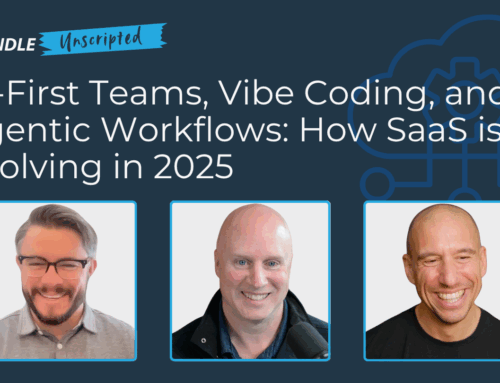Value Stream Maps (VSMs) let you see the interlinkages between the many operations in your organization. There are extra advantages to having a cross-functional team in addition to merely developing an eye-catching, bright design, or fantastic print for your conference room walls. Because team members immediately discover that they thought they had an accurate image of the value stream, but only from their point of view, the value stream mapping process is one of the most revealing.
The construction of a value stream map ensures that all project participants have a common knowledge of the project’s objectives. Being receptive to new ideas and inquiring of coworkers all assist in establishing a solid, value-stream-based foundation for the improvement endeavor.
Once completed, your value stream map can serve as an anchor for conversation. Because the map is used to create a vision for the future of your business, you may also use it to notify the rest of the organization about what has been done, discovered, considered, and decided to act on. In addition, it’s an excellent approach for educating your team while letting them feel involved in the change.
When evaluating your team for your next value stream mapping exercise, keep in mind that there are other benefits beyond a visually appealing map; thus, let those vital to the process participate.
To reiterate, value streams visualize workflows to facilitate solution creation and offer the following benefits:
- Teams can operate with smaller batch sizes due to fewer handoffs and delays.
- Allows long-term, stable teams to concentrate on adding value on top job accomplishments.
- This enables a more rapid time-to-market and learning.
- Contributes to the enhancement of both quality and productivity.
- Encourages the use of more cost-effective planning and development practices.
Consolidating the Theory of Constraints
Incorporating the theory of constraints (TOC) is a very effective method of simplifying operations. The idea has far-reaching implications for identifying and successfully managing process bottlenecks to create an efficient process flow.
In addition, you can use constraints to alleviate bottlenecks and enhance process flow. Eliyahu M. Goldratt has eloquently shown in his book “The Goal.” The theory has far-reaching implications for identifying and correctly addressing process bottlenecks to produce an adequate process flow. Expressed, “Each system’s throughput is constrained by a single constraint (bottleneck).” As a result, boosting throughput requires identifying and addressing the bottleneck or restriction first.
The TOC is a concept for process improvement established by Eliyahu Goldratt. It recognizes that any process or production will always have one constraint.
Fortunately, you can apply the theory of constraints and value stream mapping to increase efficiency. The five steps outlined below are designed to aid you in detecting constraints early on in your VSM process and reducing or eliminating them.
Determine the constraint: You must identify the problem area in the process that is preventing you from reaching your goals. Internal and external constraints, such as a lack of expertise or a lack of money, can all limit a project’s success.
Utilize the constraint: Use your existing resources to minimize the impact of the limitation. If one overburdened employee is the bottleneck, spread the work over several shifts.
In addition, non-constraint process components must report and synchronize with the constraint to be aligned and supported.
However, a higher emphasis should be given to addressing the issue if possible. For instance, you may need to recruit more workers in areas where the bottleneck occurs to enhance workflow.
Repeat the procedure as necessary: TOC is an ongoing practice that aids in your improvement. You’ll need to repeat these phases several times to ensure that you’re completing the task and meeting your objectives.
How Else Can You Utilize The Theory of Constraints and Value Stream Mapping?
A value stream map illustrates each stage of the product or service development process for you and your team. Your team may discover non-value-added locations where limits hinder operations by monitoring people, processes, information, and inventories.
Workspaces that are well-organized, safe, clean, and productive are the goals of the 5S method. It ensures seamless operations and minimizes the impact of restrictions. The following are the steps of the 5S process:
- Sort: through your inventory and discard non-essential items to save time searching for what you require.
- Straighten: Organize your belongings and tools to make them more accessible.
- Shine: Maintain a clean and organized work environment.
- Standardize: Regular cleaning, organization, and categorization are required.
- Sustain: this strategy and ensure that it is followed by your team.
Drum-buffer-rope
The drum-buffer-rope system devised by Eliyahu Goldratt limits the quantity of work done at any given time. Also, one of the system’s bottlenecks is the drum. Further, the drum’s capacity determines the amount of work done. The result is being held up by the bottleneck that is referred to as the buffer. The backup will be overloaded if this buffer grows to its maximum size. Moreover, only a tiny amount of work should be released from the buffer to keep the bottleneck running as efficiently as possible (the rope).
Hence, the drum-buffer-rope method focuses on the process’s non-bottleneck components. The drum-buffer-rope tells you when to speed up, slow down, or halt specific procedure steps.
You may zoom in and out of close focus, like a video camera, to extensively analyze a process or step and then compare it to the rest of the line, process, or organization, using a more comprehensive perspective theory of limitations. A comprehensive perspective is essential because TOC sees companies as a network of departments and activities.
In addition, the TOC offers a unique window into the production processes of a product line or business at the local or individual level. Individuals or divisions that excel in completing tasks quickly and effectively may not be the best match for the company.
From the frame of the TOC, a company’s principal duty is to earn income or, in the case of a service organization, to serve its clients. The goal is not to produce anything but to sell it and make money for a business. This is referred to as “throughput” by TOC.
To answer the following questions in terms of VSM, use the TOC:
- What has to be done to improve the situation?
- What will the new name be called?
- Do we have the ability to fix the situation?
In the first place, what is a restriction if every system and organization has one? A restriction, in the words of Goldratt, is “anything that inhibits a system from achieving better than its purpose.” It is a limitation if a phase or process does not provide as much profit or throughput as it should.
Goldratt regarded limitations (also known as bottlenecks) as opportunities to boost productivity rather than a sign of a problem. Theory of limitations recognizes that most firms are constrained in some way. Many professionals would differ on particular matters, but they all agree that there can always be just one restriction at a time.
To Summarize
By integrating the theory of constraints and value stream mapping, a growing lean business may aggressively and continuously optimize time-to-market for competitive advantage. The most straightforward technique for reducing time to market is to reduce bottlenecks in the value stream using the TOC.






